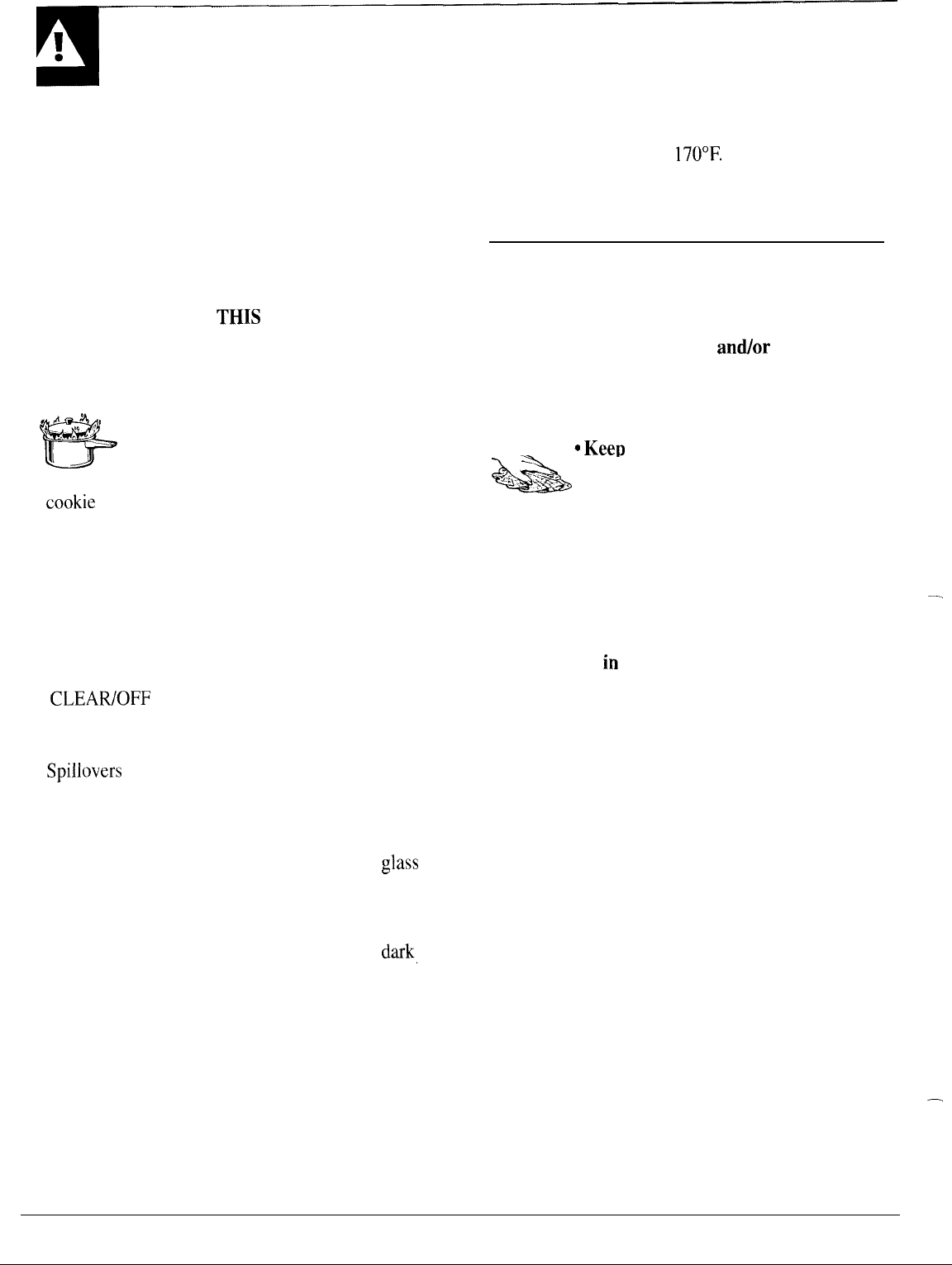
IMPORTANT SAFETY INSTRUCTIONS
(continued)
●
Always keep dish towels, dish cloths,
potholders and other linens a safe distance
from your range.
●
Always keep wooden and plastic utensils and
canned food a safe distance away from your
range.
●
DO NOT STORE OR USE COMBUSTIBLE
MATERIALS, GASOLINE OR OTHER
FLAMMABLE VAPORS AND LIQUIDS IN
THE VICINITY OF
THIS
OR ANY OTHER
APPLIANCE.
●
Do not let cooking grease or other flammable
materials accumulate in or near the range.
e
●
Do not use water on grease fires.
44.
~
j$
Never pick up a flaming pan.
Smother flaming pan on surface unit
by covering pan completely with well-fitting lid,
cookie
sheet or flat tray or, if available, a multi-
purpose dry chemical or foam-type fire
extinguisher.
Flaming grease outside a pan can be put out by
covering with baking soda, or if available, a
multi-purpose dry chemical or foam-type
extinguisher.
Flame in oven can be smothered completely by
closing the oven door and pressing the
CLEAWOFF
pad or use a dry chemical or
foam-type extinguisher.
●
Do not cook on a broken glass cooktop.
Spillovers
or cleaning solution may penetrate a
broken cooktop and create a risk of electrical
shock. Contact a qualified technician immediately
should your cooktop become broken.
●
Use care when touching the cooktop.
The
glass
surface of the cooktop will retain heat after the
controls have been turned off.
●
Do not touch surface units.
These surfaces may
be hot enough
to
burn even though they are d~k,
in color. During and after use, do not touch, or let
clothing or other flammable materials contact
surface units or areas nearby surface units; allow
sufficient time for cooling, first.
Potentially hot surfaces include the cooktop and
areas facing the cooktop.
. When cooking pork,
follow the directions
exactly and always cook the meat to an internal
temperature of at least
170°F.
This assures that, in
the remote possibility that trichina may be present
in the meat, it will be killed and the meat will be
safe to eat.
Oven
●
Stand away from the range when opening the
oven door. Hot air or steam, which escapes, can
cause burns to hands, face
ancUor
eyes.
●
Do not heat unopened food containers.
Pressure could build up, and the container
could burst, causing an injury.
*
Kee~
the oven vent duct
a
unobstructed.
●
Keep the oven free from grease
buildup.
●
Place the oven shelf in the desired position
while the oven is cool.
If the shelves must be
handled when hot, do not let pot holder contact
_
heating elements in the oven.
●
Pulling out the shelf to the shelf stop is a
convenience
in
lifting heavy foods. It is also a
precaution against burns from touching hot
surfaces of the door or oven walls.
●
Do not use aluminum foil to line the oven
bottom or the cooktop, except as suggested in
manual. Improper installation of these liners may
result in electric shock or fire.
. When using cooking or roasting bags in oven,
follow the manufacturer’s directions.
●
Do not use your oven to dry newspapers.
If
overheated, they can catch fire.
●
Be sure the vent duct is not covered and is in
place.
Its absence during cooking could damage
range parts and wiring.
—
4


















